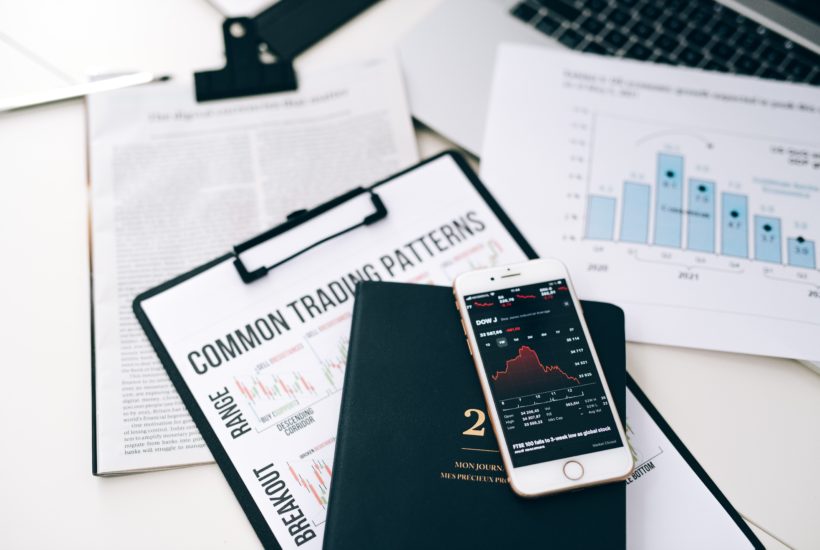Business
Four Reasons to Trade Stock Indices
Index trading involves speculating on the direction of the price of an index. If you are a scalper or day trader, you might prefer the Cash CFD products as they will have lower spreads and longer trading hours. They are subject to a daily swap charge, but if you close your positions prior to the market close, it will not affect you.

Let us start with the basics – an index is used to measure the performance of a group of assets. When we talk about stock indices, this would be a group of individual stocks and their stock price.
What are indices?
One famous stock index you have probably heard about is the S&P 500. The S&P 500 is an index tracking the performance of 500 large U.S.-listed companies. It is often used as a benchmark for comparing the performance of investment funds, but it is also a popular and easy way for investors to track the overall performance of the U.S. stock market.
In financial media, analysts will often refer to indices when commenting about the performance of a particular country´s financial market. Some other indices you might have heard of are:
- FTSE 100 (United Kingdom)
- DAX 40 (Germany)
- Nikkei 225 (Japan)
- Hang Seng Index (Hong Kong)
What is index trading?
Index trading involves speculating on the direction of the price of an index.
If you expect that the S&P 500 will increase in price over a certain period, you can buy the index (i.e., take a long position in the market). You will be profiting from an increase in the value of the index.
On the other hand, if you believe that the S&P 500 will decline over a certain period, you can sell the index (i.e., place a short position in the market). You will therefore be speculating on a falling index without owning any of the underlying instruments and profiting from a decrease in the value of the index.
Find out more about the S&P 500 and how to start index trading.
Four major reasons why to trade stock indices
Flexibility to go long and short
As shown in the previous examples, by trading indices you can profit both from rising and falling prices. This is beneficial for both traders and investors. For example, frequently shifting your portfolio can become expensive and getting the timing right to re-enter the market can be extremely tricky. Instead of selling a significant part of their holdings every time they sense a downturn is coming, investors might instead sell an index using CFDs. Which index to choose will depend on where you have most of your exposure. If 80% of your holdings are in U.S. large cap equities, you might find going short on the S&P 500 the logical choice.
Efficient way to take a directional trade
Let´s assume that you are very bullish on the U.S. technology sector as you think that the work-from-home technology boom will last and that the economic recovery will be kind to the stock price of plenty of tech companies. Instead of buying a lot of different stocks – which can be expensive and difficult to manage – or narrowing down your choice to only 2-3 of them, which can be a difficult choice and lead to mistakes, you could just buy the NASDAQ 100 index. This is a cost-effective way to speculate on a growing U.S. technology sector and it is far easier to manage one position than having to deal with multiple.
Indices can provide diversification
Continuing with the previous example, picking the right stocks can be difficult. Let´s assume you have a bullish view on the Australian economy and think that the Australian stock market is undervalued. You might not have the resources, time, or expertise to analyze the market and come up with a portfolio of Australian individual shares you want to buy. Buying the ASX 200 index instead will not only make it easier for you, but you will also be diversified, as the index consists of companies from different sectors.
Less capital needed
Index CFDs are a leveraged product, which means the margin required to open a position is low. This can free up a lot of your capital, which you can use to capitalize on other investing / trading opportunities.
How can you trade indices?
The most popular way to trade indices for retail traders is to use Contracts for Differences (CFDs). CFDs are financial instruments that allow traders to profit both from falling and rising prices; open a short (sell) position if you think the index will fall; open a long (buy) position, if you think an index will rise. There are two types of CFDs:
- Cash CFDs
- Futures CFDs
Difference between Cash CFDs and Futures CFDs
- Cash CFDs are based on the spot market, while Futures CFDs are based on the underlying Futures contract.
- Cash CFDs are subject to a daily swap fee. You will not pay any overnight funding charges by trading Futures CFDs.
- Cash CFDs will be subject to dividend adjustments, while this is not the case with Futures CFDs.
- However, there will be a rollover every time the underlying Futures contract expires. Since the Cash CFDs are based on the spot price, there are no rollovers.
- Cash CFDs will generally have lower spreads.
- Cash CFDs have longer trading hours.
Which product should I trade?
If you are a scalper or day trader, you might prefer the Cash CFD products as they will have lower spreads and longer trading hours. They are subject to a daily swap charge, but if you close your positions prior to the market close, it will not affect you.
On the other hand, if you are a medium to long-term trader that is not so sensitive to spreads, you might prefer the Futures CFDs as you can avoid paying the daily financing charges. However, you should take note of the rollover dates.
—
(Featured image by Olya Kobruseva via Pexels)
DISCLAIMER: This article was written by a third party contributor and does not reflect the opinion of Born2Invest, its management, staff or its associates. Please review our disclaimer for more information.
This article may include forward-looking statements. These forward-looking statements generally are identified by the words “believe,” “project,” “estimate,” “become,” “plan,” “will,” and similar expressions. These forward-looking statements involve known and unknown risks as well as uncertainties, including those discussed in the following cautionary statements and elsewhere in this article and on this site. Although the Company may believe that its expectations are based on reasonable assumptions, the actual results that the Company may achieve may differ materially from any forward-looking statements, which reflect the opinions of the management of the Company only as of the date hereof. Additionally, please make sure to read these important disclosures.
The information is not to be construed as a recommendation; or an offer to buy or sell; or the solicitation of an offer to buy or sell any security, financial product, or instrument; or to participate in any trading strategy. Readers should seek their own advice. Reproduction or redistribution of this information is not permitted.

-

 Crypto1 week ago
Crypto1 week agoAAVE Community Challenges Aave Labs Over Governance and Control
-

 Crowdfunding6 days ago
Crowdfunding6 days agoDeep Learning Italia Launches €400K Crowdfunding to Bridge Italy’s Tech Skills Gap
-

 Biotech2 weeks ago
Biotech2 weeks agoSpain Joins First EU Joint Clinical Assessment Under New Health Technology Regulation
-

 Crowdfunding1 week ago
Crowdfunding1 week agoa2censo Expands Crowdfunding Access for SMEs and New Investors















